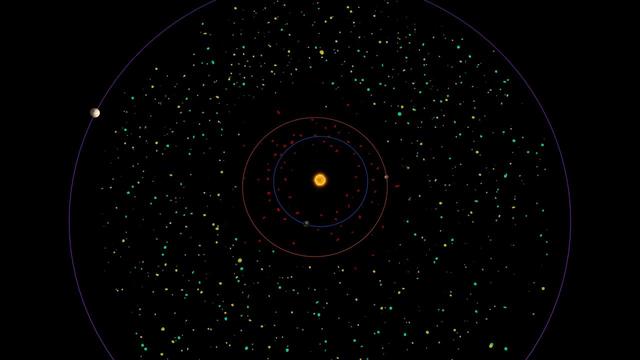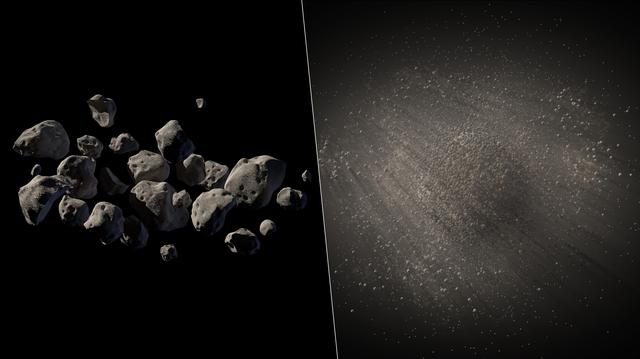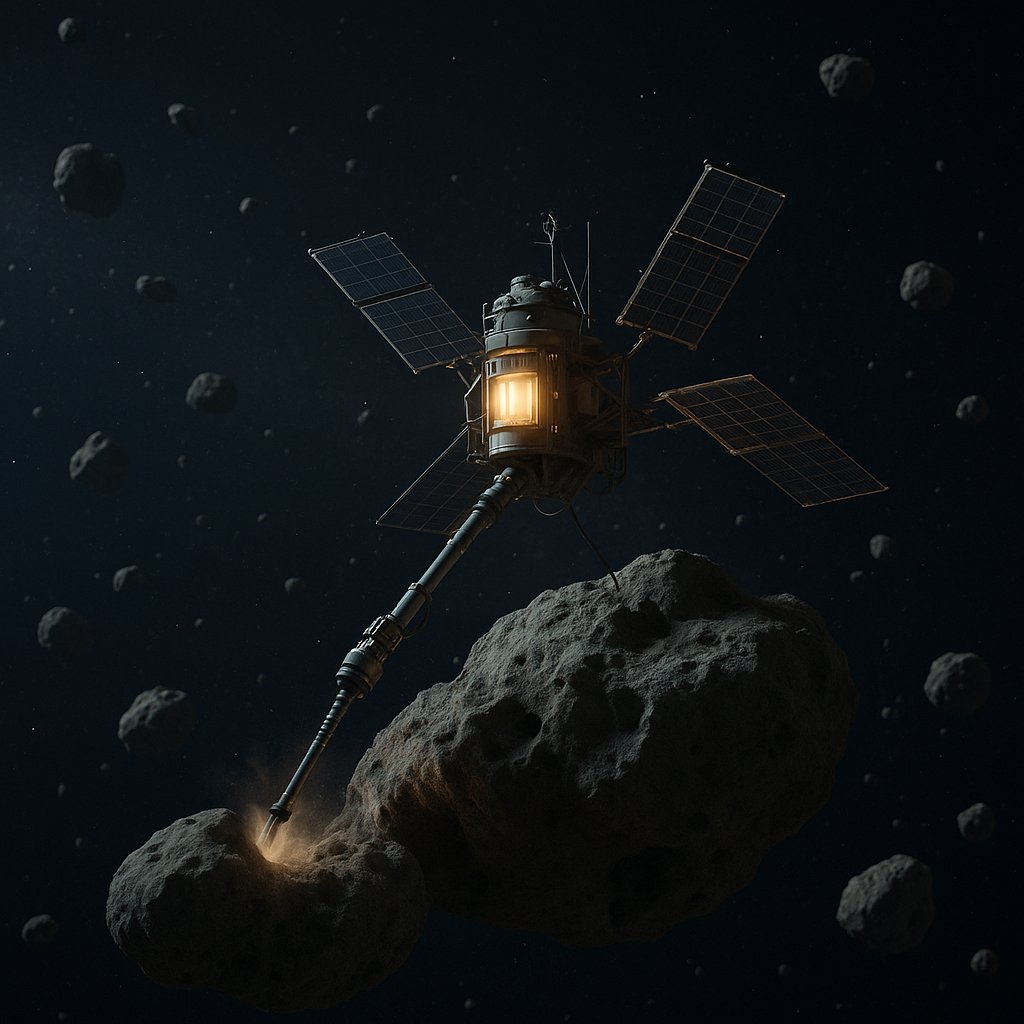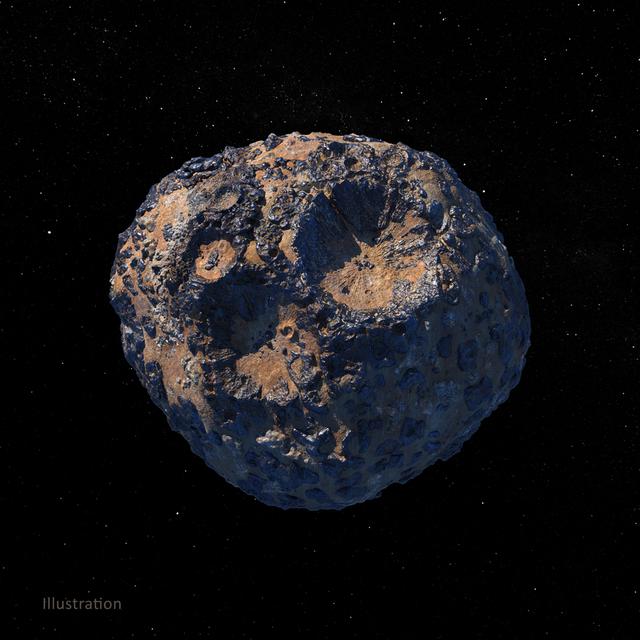Asteroids have been drifting through our solar system for over 4.5 billion years, often unnoticed in the night sky. But these ancient celestial objects are far more than just debris. They are primordial asteroids, formed from the original building blocks of planets, and they carry with them the secrets of how our solar system came to be.
As research and space exploration evolve, asteroids are drawing increased interest for both their scientific significance and their practical potential. Understanding how they formed, how they differ from other celestial bodies, and what lies beneath their surfaces opens new possibilities – not only for learning about the past, but also for shaping the future.
How Did Asteroids Form?

Let’s start with the basics: how did asteroids even form? Asteroids formed in the early solar system from a rotating protoplanetary disk of gas and dust. This was the same disk that formed the Sun and all the planets. While some parts of this disk clumped into full-sized planetary bodies, other parts were disrupted by gravitational forces, especially from larger planets like Jupiter, preventing full formation.
These leftover materials became rocky objects that we now call asteroids. Most ended up in the asteroid belt, a region between Mars and Jupiter. This belt contains millions of asteroids, ranging from tiny pebbles to massive bodies hundreds of kilometers across. The largest object in the asteroid belt is Ceres, which is so big it’s classified as a dwarf planet.
Other larger asteroids like Vesta, Pallas, and Hygiea are also key examples of what scientists call differentiated asteroids – objects that got hot enough early in their lives to form layers, like a core and crust. But the vast majority of asteroids are smaller and more primitive. They never underwent melting or separation and remain frozen in time, which means that they are preserving conditions from the birth of the solar system.
The Different Types of Asteroids

Asteroids are typically grouped into several classes depending on what they’re made of, how they reflect light, and in some cases, where in the solar system they originally formed. So, naturally, understanding these types isn’t just important for scientists – it’s also key for planning exploration missions or even mining operations in the future. Let’s take a more detailed look at these classifications:
- C-type Asteroids (Carbonaceous Asteroids)
These are by far the most common type. They make up around 75% of all known asteroids and are found mostly in the outer part of the asteroid belt. These are very dark objects due to their high carbon content and are believed to be among the most primitive celestial bodies in the solar system. They haven’t changed much in over 4 billion years. What makes them especially interesting is that they contain water-bearing minerals and complex organic compounds.
For instance, NASA’s OSIRIS-REx mission studied the near-Earth asteroid Bennu – a C-type – and found signs of hydrated clay minerals and even organic molecules. These discoveries support the theory that such asteroids might have played a role in delivering water and building blocks of life to Earth.
- S-type Asteroids
Made mostly of silicate rocks mixed with some metal. They account for about 17% of known asteroids and are generally brighter than the C-types. You’ll find them mostly in the inner region of the asteroid belt. These asteroids are thought to have formed from the crust of larger bodies that were once partially molten.
One well-known example is Itokawa, which was visited by Japan’s Hayabusa mission. The spacecraft revealed that Itokawa is actually a rubble pile – a collection of rocks and dust held loosely together by gravity. This told scientists that S-types could be reassembled fragments from earlier, larger asteroid collisions.
- M-type Asteroids (Metallic Asteroids)
Less common but incredibly important for research and mining potential. These bodies are rich in metals like nickel and iron, and sometimes even contain rare precious metals like platinum. Scientists believe they’re the exposed cores of differentiated asteroids – bodies that once melted and separated into layers, like planets do. Over time, collisions stripped away their outer rock, leaving only the metal-rich core.
The best example here is 16 Psyche, a large metallic asteroid in the middle of the asteroid belt. NASA launched the Psyche mission in 2023 specifically to study it, as it may offer a close-up look at what the interior of a rocky planet like Earth looks like.
Finally, many asteroids – no matter their type – are not solid at all. They’re what we call rubble pile asteroids: loose collections of rock, dust, and boulders that came together after past collisions. These structures are held together mostly by gravity and are much more fragile than solid bodies.
This has major implications for spacecraft attempting to land or extract material. Ryugu, studied by Japan’s Hayabusa2 mission, is a well-known example of this type, as is the Didymos-Dimorphos binary system that NASA used for its DART impact test. In both cases, the missions revealed how loosely packed and unstable these asteroids can be, which adds another layer of complexity when thinking about asteroid mining or planetary defense.
In short, each class of asteroid tells a different part of the story of our solar system’s history. They also present unique challenges and opportunities when it comes to future exploration, scientific study, and practical use.
What Makes Asteroids Different from Other Ore Deposits?
Compared to Earth, Mars, or even the Moon, asteroids offer something very rare: homogeneity. On Earth, ore deposits vary greatly in quality and distribution. Before mining can begin, companies must conduct expensive and time-consuming surveys and test drilling to locate high-grade areas. The composition of asteroids, especially metallic asteroids, is much more uniform.
This is because many of them formed as molten cores of planetesimals that were later broken apart. The metal distribution is largely even. That means mining an asteroid doesn’t require extensive exploration to find the best part – the ore grades should be the same everywhere.
According to the Space Resources Handbook, metal-rich asteroids can contain up to:
- 80% iron and nickel,
- With platinum-group metals (PGMs) in concentrations 100 to 1,000 times higher than Earth’s richest mines.
This makes them extremely attractive for future mining, especially as rare earth metals on Earth become harder to find and extract.
Why Is Asteroid Mining Practical?

There are millions of asteroids in our solar system, scattered across various regions but especially concentrated in the asteroid belt and among near-Earth asteroids (NEAs). NEAs are particularly appealing for mining because their asteroid orbits bring them relatively close to Earth, sometimes closer than the Moon itself. This makes them much more accessible for robotic missions, with lower energy requirements compared to landing on a planetary surface.
NASA’s Center for Near-Earth Object Studies keeps an updated list of all Earth objects, including those with favorable orbits and composition for future exploration. The current asteroid count includes thousands of NEAs, and many of them have been identified as potential targets for prospecting or mining.
Another reason asteroid mining is practical is because of the low gravity of these objects. Unlike the Moon or Mars, asteroids do not require heavy drilling equipment or large-scale excavation systems. Their surfaces can often be accessed with lightweight robotics or landers. For rubble pile asteroids, materials may even be collected using suction devices or scooping arms, as demonstrated by missions like OSIRIS-REx and Hayabusa2.
In addition to accessibility, the economic appeal lies in their makeup. While planetary ore deposits often require extensive geological surveys to locate the richest seams, metallic asteroids tend to have a more uniform composition throughout. These solid bodies are essentially entire chunks of valuable material, like a floating mine in space. As a result, extraction could be simplified, and pre-mining analysis greatly reduced, saving both time and cost.
Altogether, the combination of proximity, consistent ore quality, and ease of access makes asteroid mining a highly practical and increasingly realistic option as space technology continues to develop.
What Are the Risks?
While the opportunities are exciting, not all asteroids are safe or simple to interact with. Some rubble piles might fall apart when touched due to their fragile, loosely bound structure. These kinds of asteroids pose challenges not only for mining but also for landing or anchoring spacecraft. Their unpredictable surface behavior, demonstrated by missions like OSIRIS-REx, which saw Bennu’s surface collapse like a ball pit, can complicate any mission operations.
Others could be hazardous asteroids, with orbits that might bring them dangerously close to Earth. These objects are carefully monitored because small changes in trajectory, caused by gravitational interactions or the Yarkovsky effect (where uneven heating causes a slow orbital drift), can shift their path over time.
Asteroid impacts have shaped our planet’s history, with the most famous being the Chicxulub impact that wiped out the dinosaurs around 65 million years ago. That asteroid was about 10 km wide, but even a dangerous asteroid just 200–300 meters across could destroy an entire city or region. Today, the majority of NEOs are tracked by global monitoring systems, including NASA’s Near-Earth Object Observations Program and ESA’s Planetary Defence Office.
That’s why missions like NASA’s DART mission are so important. DART successfully altered the orbit of Dimorphos, a small moonlet in a binary asteroid system, proving that kinetic impact could be a viable method to deflect a hazardous object. This marked the first real-world test of planetary defense technology and paved the way for future strategies to prevent catastrophic asteroid impacts.
What Are the Latest Missions Telling Us?

We’re in a golden age of asteroid exploration. Here are some recent and upcoming missions that reveal more about asteroids:
- OSIRIS-REx (NASA) launched in 2016 and reached the near-Earth asteroid Bennu in 2018. After mapping its surface and conducting sample collection in 2020, it returned 121.6 grams of material to Earth in 2023. The samples revealed rich carbon compounds, clay minerals, and signs of water, offering insight into the formation of C-type asteroids and how they may have contributed organic compounds to early Earth.
- Hayabusa2 (JAXA) arrived at asteroid Ryugu in 2018 and collected samples from both surface and subsurface layers using a small impactor. The samples, returned to Earth in 2020, contained hydrated minerals and amino acids, confirming Ryugu’s history as a rubble pile asteroid with exposure to water. This mission advanced our understanding of how such asteroids evolve and retain materials crucial for life.
- Lucy Mission (NASA) launched in 2021 and is currently en route to study eight Trojan asteroids locked in Jupiter’s orbit. These targets are believed to be among the oldest and least-altered bodies in the outer region of the solar system. By visiting both the leading and trailing swarms of Jupiter’s Trojans, Lucy aims to reveal how different populations of asteroids formed and migrated across the early solar system.
- Psyche Mission (NASA), launched in 2023, is the first mission to visit a solid body composed mostly of metal. Its destination is 16 Psyche, a large metallic asteroid thought to be the exposed nickel-iron core of a once-molten protoplanet. Expected to arrive in 2029, Psyche will provide key insights into the internal structure of differentiated asteroids and help scientists compare metal asteroids to Earth’s own planetary core.
Each mission helps us understand how these rocky bodies formed, what they’re made of, and how we might use them in the future for science, safety, and resources.
Space Rocks with Serious Potential
These celestial objects preserve the untouched history of the early solar system and possibly, the future of the sustainable space industry. With their consistent composition, especially in the case of metallic asteroids, they offer a mining opportunity unlike anything on Earth or the Moon. Their accessibility and resource potential are already shifting how we think about long-term exploration.
Momentum is building – scientific missions are returning with groundbreaking insights, and commercial interest is following closely behind. In the vast and quiet spaces between the planets, asteroids are no longer just drifting; they’re waiting.